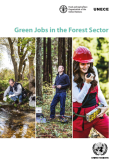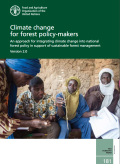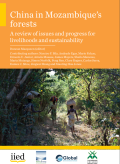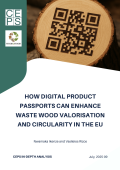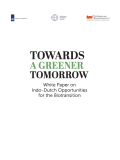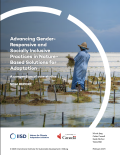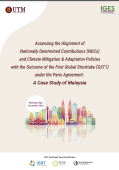
Forests make up 31 per cent of the land area on our planet and are a direct source of food, energy and income for more than a billion of the world’s poorest people; they also store carbon and mitigate climate change, preserve water and soil health, and prevent desertification. However, many forests are not being sustainably managed and the world’s forested area is declining, mainly because of land use changes and agricultural expansion.
The forest sector has great potential for contributing to inclusive green growth, as it is labor intensive, provides significant export opportunities, and, if managed sustainably, can help to mitigate climate change. For example, promoting harvested wood products (HWP) (such as wood for construction or furniture, or biomass for energy) is an important strategy for maximizing the economic, social, and environmental potential of the forest sector (Climate Investments Fund, 2017). The Reducing Emissions from Deforestation and Forest Degradation (REDD+) scheme offers financial incentives to developing countries that reduce emissions from deforestation and degradation while investing in low-carbon paths to sustainable development. With the right programmes and policies, forestry can lead the way towards sustainable, greener economies, including higher incomes and jobs.
Relevance to SDGs
Forestry is particularly relevant to Sustainable Development Goal (SDG) 15 around issues of biologically diversity, deforestation and the restoration of degraded forests.
Explore green growth resources related to SDG 15:
It is estimated that up to USD 49 billion is required every year to achieve forest and landscape restoration. The importance of forests as carbon sinks and a vital source of biodiversity has received increased attention in recent years. International climate change negotiations have sought to develop a mechanism for reducing emissions from deforestation and forest degradation and conserving, sustainably managing and enhancing forest carbon stocks.
Research shows that only 13-17% of the total annual funding needs for restoration and conservation are currently being met. Long-term financing solutions may increasingly rely on the private sector for investments in sustainable forestry and impact investment in related areas such as sustainable commodities and alternative business models for local smallholders. However, many barriers need to be overcome in order to make the forest restoration project pipeline attractive, including better communication around bankable projects and investment risk.
Proactive countries have developed integrated financing strategies and mechanisms blending different capital sources to invest in forest restoration in both the readiness and implementation phases. For instance, the Tropical Landscapes Finance Facility supports Indonesia in aiming to mobilize international capital at scale to sustainable practices and, among others, seeks to provide long-term debt to individual projects in forest conservation and supports deforestation-free supply chains through strict lending criteria.




